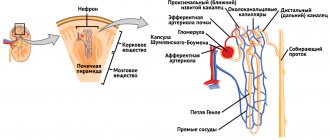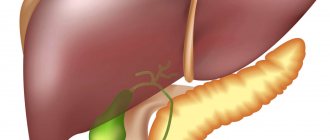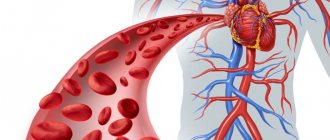Symptoms of viral rhinitis
Cough due to a viral infection
People with weakened immune systems are at risk of getting this type of rhinitis. This condition occurs, for example, after hypothermia. It is characterized by the fact that nasal congestion occurs almost immediately due to swelling of the mucous membrane. Discharge from the nose appears - first mucous, and then purulent. A person feels pain in the eyes and a sore throat, causing a cough.
The viral type of rhinitis in children or adults goes through several phases:
- Dry phase. Apart from itching in the nose and slight congestion, nothing bothers the patient. This phase is combined with hyperemia (redness) of the nasal mucosa.
- Humidity phase. Redness spreads to surrounding areas and the oropharynx, and swelling increases. As a result, almost complete obstruction (blocking of the lumen) of the nose occurs with impaired nasal breathing. During this phase, the temperature rises and other symptoms characteristic of a viral infection occur. A serous discharge leaves the nose, first clear, and then even mixed with blood.
- At the third stage, swelling of the mucous membrane decreases and purulent discharge appears. At this stage, connective tissue spreads, filling the defects caused by acute inflammation.
Acute viral rhinitis at the onset of the disease is almost no different from a respiratory viral disease, as it is manifested by high fever, pharyngitis or laryngitis and other symptoms. Almost always, a viral runny nose occurs with inflammation of the paranasal sinuses, since it cannot be isolated. If a viral infection is not treated, the virus subsides and waits for the immune system to decline again. Then a diagnosis of “viral chronic rhinitis” is made.
Causes
Each type of runny nose has specific causes of occurrence and development.
Chronic rhinitis
Chronic rhinitis
Occurs for the following reasons:
- Frequent recurrence of acute infectious rhinitis.
- The nasal septum is curved, leading to concha hypertrophy.
- Congenital pathologies.
- Effect of irritating factors.
- Allergy.
Hot air dries out the nasal mucosa, which inhibits the functioning of the ciliated epithelium; with constant hypothermia, a reflex change in vascular tone occurs. Adenoids cause a narrowing of the lumen of the nasal passages. The infectious process in chronic tonsillitis is very dangerous.
Systemic pathologies due to impaired blood circulation and nasal injuries contribute to the appearance of chronic rhinitis.
Long-term use of nasal drops with a vasoconstrictor effect often causes the development of vasomotor rhinitis.
If you have a runny nose at night, you need to look for the reasons in the night rest room.
Signs of acute rhinitis
The disease is divided into 3 stages according to its development:
- Dry.
- Wet.
- Purulent.
The dry stage lasts several hours, in some cases up to 2 days. The nasal mucosa is filled with blood. There is a burning sensation in the nose, tears flow from the eyes. Often the painful condition is accompanied by pain in the head and low-grade fever.
Swelling causes the nasal passages to narrow, making it difficult to breathe through a stuffy nose. The sense of smell and taste is impaired. The wet stage is characterized by serous discharge: plasma leaks out. The surrounding tissues are saturated with serous fluid. The mucus discharge contains a large amount of ammonia and sodium chloride, which explains the irritation on the upper lip and wings of the nose during rhinitis.
Treatment of viral rhinitis in children and adults using pharmaceutical medications
Treatment with vasoconstrictor drugs
Therapeutic measures depend on many factors. For example, if, in parallel with rhinitis, there is a pronounced clinical inflammation with a high temperature, then it is necessary to simultaneously take antipyretics based on paracetamol or ibuprofen (Panadol, Nurofen). It is advisable to treat viral rhinitis with the use of antiviral drugs: Laferon, Arbidol. Antiviral drugs should be taken only at the onset of the disease, since at the height of clinical manifestations they simply do not make sense. In addition to their antiviral effect, these drugs stimulate the immune system and speed up recovery.
For severe runny nose, vasoconstrictor medications are recommended (Otrivin, Evkazolin, Naphthyzin). But they are treated for no more than a few days and do no more than 2-3 instillations per day, as they damage the mucous membrane and are addictive. For chronic viral rhinitis, the use of vasoconstrictors is not recommended. They will only aggravate the course of the disease, and their damaging effect during treatment becomes twice as strong.
Since this is a viral infection, it is recommended to drink more water and other drinks (compotes, uzvar, herbal infusions) for the purpose of detoxification, especially during the acute period. Proper drinking regimen will significantly speed up recovery.
Washing the nose with antiseptic solutions, for example, Miramistin, is considered important in treatment. In its absence, such washings can be carried out with ordinary salted water or saline solution. Rinsing cleanses the nasal cavity from dry crusts, pathological exudate and simply washes away viral particles from the nasal membranes.
If swelling is severe, the doctor may prescribe antihistamines: Diazolin, Loratadine. Severe swelling of the mucous membrane with allergy symptoms is relieved with the help of hormonal nasal sprays, such as Nasonex.
How to cure a runny nose in adults
If treatment is not started promptly, it may take a long time. Allergic and chronic rhinitis are treated with the same medications. The patient's condition with rhinitis can be significantly alleviated with the help of traditional medicine.
Treatment of runny nose in adults
Treatment of acute rhinitis
Timely treatment begins to bring relief the next day. At the first symptoms of the disease, the following measures are taken:
- Steaming limbs;
- Mustard plasters on the area of the feet and calf muscles;
- Lemon drink with honey;
- Taking Paracetamol;
- Covering with a warm blanket.
At the first stage of the disease, the drugs Interferon, Lysozyme, and vitamin complexes are prescribed. At the second stage of the disease, antibiotics are taken. It is impossible to do without vasoconstrictor drugs.
At the third stage, when there is a runny nose without fever, astringents, antimicrobial drugs, and vasoconstrictor drugs are prescribed. Inhalations and physiotherapy are required.
How to treat subacute rhinitis
Drug therapy comes to the fore: antibiotics, antiseptic ointments. At normal temperatures, herbal baths and mustard powder for baths of the lower extremities help well. Inhalations with calendula and chamomile for a runny nose bring good results.
Therapy of atrophic rhinitis
Nasal cleansing drops are prescribed without fail. Good results are obtained by using a saline solution. If the runny nose is infectious, antibiotics are used. It is necessary to take vitamins. For hypertrophic rhinitis, surgical treatment methods are used.
How is catarrhal rhinitis treated?
For viral etiologies, antiviral drugs, drops to constrict nasal vessels, and saline rinses are used.
Treatment of allergic rhinitis
The following drugs are used to treat the disease:
- Zodak.
- Loratadine.
- Zyrex.
- Flixonase.
- Levocabastine.
Treatment is carried out both orally and in the form of nasal instillations.
Therapy for vasomotor rhinitis
For the disease, the following drugs are used: Drops for vasoconstriction (Galazolin, Naphthyzin, Sanorin, Evkazolin).
Medicine for moisturizing – “Dolphin”.
Treatment of drug-induced rhinitis
For the treatment of the disease, complete abstinence from the use of medications is important. Climatic treatment helps to get rid of a runny nose: sea forest or mountain air has a beneficial effect on the patient’s well-being. Salt rinses are useful.
Treatment with folk remedies
Mucous discharge from the nose due to viral origin of rhinitis
Treatment with folk remedies is only an auxiliary method and is carried out only in combination with antiviral or other drugs.
You can try nasal drops with aloe or kalanchoe. This is especially effective in the chronic form. Rinsing with an alcoholic infusion of propolis (20 drops of tincture in half a glass of water) is effective. You can add honey to propolis rinses...
Treatment of dry rhinitis
A chronic disease with a feeling of constant drying of the nasal mucosa is called dry runny nose. When a doctor diagnoses dry rhinitis, treatment should begin immediately, since drying out the membrane of the nasal septum can lead to its decomposition and provoke ulcers or, as doctors say, erosion of the nasal cartilage.
It is quite possible to cure a dry runny nose in a week if you correctly understand the features of therapy. Its basis is moisturizing the mucous membrane, so you should:
- rinse the nasal passages more often with saline solution;
- install a humidifier in the room;
- regularly carry out wet cleaning and ventilate the room.
Decoctions and infusions of medicinal herbs, especially nettle, calendula or medicinal chamomile, also help maintain health with such a runny nose. They can be used as nasal drops up to six times a day. The dosage is determined by the complexity of the disease and can range from one to three drops at a time.
When a diagnosis of dry non-allergic rhinitis is made, vasoconstrictor drops (Naphthyzin, Ephedrine solution, etc.) can also be used to facilitate nasal breathing. They help cope with the consequences of the disease: nasal voice, insomnia, headache.
When the cause of a dry runny nose is a virus, it is necessary to instill products containing interferon into the nose. Moreover, if rhinitis is accompanied by fever, then diaphoretic and antipyretic medications (for example, acetylsalicylic acid) will help to cope with it.
In addition, when diagnosed with dry viral rhinitis, treatment is best carried out simultaneously with taking immunomodulatory drugs.
The basis of treatment for dry rhinitis is regular and prolonged moistening of the sinuses. The most ideal option would be to rinse with saline or sea water three times a day for a month or two.
If the cause of dry rhinitis is an allergy, you should immediately exclude all contact with a possible irritant. You will also need to start taking antihistamines containing vasoconstrictor components.
Prevention of a runny nose
To avoid a viral disease, it is necessary to vaccinate before an influenza epidemic, and also monitor your personal hygiene and health. At the end of the working day, you need to rinse your nasal cavity. Be sure to keep your hands clean and avoid touching your face, as viral infections can also be transmitted through your hands. During periods of viral spread, it is important to monitor your diet, which should be nutritious and contain many vitamins and minerals, especially in the chronic form.
The prognosis for viral rhinitis is satisfactory. With proper treatment, the disease will not cause much harm to the body of adults and children. Chronic rhinitis can cause atrophy over time, so this form deserves proper treatment.
Treatment of purulent rhinitis
Today, it has become not uncommon for doctors to diagnose purulent rhinitis: the treatment of this disease has its own nuances and it is important not to “overdo it” with the duration of the course of therapy. To overcome a runny nose with pus, doctors usually prescribe symptomatic topical medications.
The goal of therapy is to narrow the vessels of the nasopharynx to restore breathing and reduce secretion. The most commonly used medications are:
- "Nazol";
- "Naphazoline";
- "Sinupret";
- "Oxymetazole."
If the desired effect is not achieved, treatment continues with the use of antibiotics: this will increase the body's resistance to pathogenic microbes. The most common use is Amoxicillin (take it for no more than seven days, 500 mg, starting from the age of 12) and Bioparox aerosol (one inhalation every 4 hours in both nostrils).
When mucosal atrophy “connects” to purulent rhinitis, the nasal sinuses need increased hydration. Therefore, if purulent atrophic rhinitis occurs, treatment usually begins with the use of vegetable oil and iodine-containing preparations. These products are used to lubricate the inner lining of the nasal passages.
Particular attention should be paid to the selection of medications and methods of therapy in the treatment of purulent runny nose in children. In this case, strict monitoring of the course of the disease by a specialist is necessary.
Treatment of drug-induced rhinitis
Drug-induced rhinitis occurs when taking medications for a long time. Its treatment most often involves the use of traditional medicine recipes. They have a mild healing effect, and also have fewer side effects and are almost never addictive.
It is important to understand that medicinal rhinitis is a problem of both a physical and psychological nature. To get rid of this form of the disease you will need strong will and support from loved ones.
Doctors recommend that when diagnosed with medicinal rhinitis, treatment begins with replacing modern drugs with simple folk remedies:
- eucalyptus bath (placed once a day);
- propolis drops or ointment;
- spicy cloves or aloe juice;
- sea buckthorn and olive oil;
- tea tree inhalations;
- rinsing with sea salt;
- special yoga exercises.
In addition, if a doctor diagnoses medicinal rhinitis, treatment with folk remedies will be carried out using rosehip decoctions and warm tea with lemon. The decoction is brewed like regular tea. In order to get rid of a runny nose without consequences, even following the advice of traditional medicine must be agreed with a doctor. Self-medication not only does not have the desired effect, but also leads to an exacerbation of the disease.
In extreme cases, when conservative therapy does not produce the desired effect, the doctor may recommend gentle surgical treatment. It will also help the patient regain health even in the presence of irreversible changes that have occurred in the mucous membrane of the nasal cavity. You can avoid such measures if you promptly seek qualified help from a specialist.
Signs
Signs of drug-induced rhinitis appear literally 12-24 hours after nasal drops or spray are discontinued. Symptoms of pathology manifest themselves through:
- constant nasal congestion;
- the appearance of a runny nose;
- decreased or complete loss of sense of smell;
- irritation of the nasal mucosa, accompanied by itching, burning and redness;
- frequent sneezing;
- tearfulness caused by nasal congestion;
- snoring during sleep.
It is very important to respond to these symptoms in a timely manner and address the issue of treating rhinitis caused by intranasal administration of medications. Otherwise, the consequences will be unpleasant.










